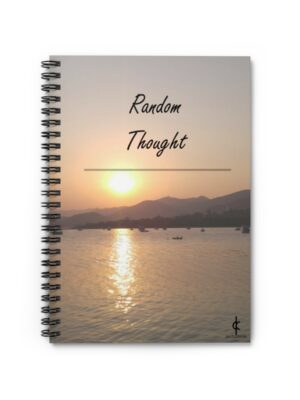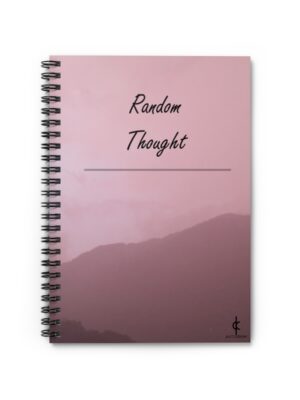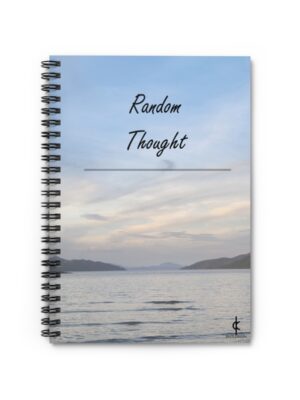The Language Learning Notebook: Unleash Your Linguistic Potential with the Ultimate Notebook Guide!
Using notebooks is very common among language learners. Language learning is a complicated subject, you need to memorize a lot of words and expressions. Notetaking is a must, it can help memorization.
But what notes should we take? Vocabs? Grammar? Frequently used expressions?
In this article, we will look into the items we can put into a language notebook so we can learn a new language fast.
This is Antlerium PotatoNews, a series focusing on the daily lives of ordinary people, including life tips. Today we explore how we use language learning notebooks to optimize our speed to handle a new language.
The basic structure of a language learning notebook
To be honest, language learning notebooks have no standard. Some people can have different notebooks for different aspects, for example, one book for vocabulary, one book for conversations and dialogues, and one book for writing practice. But some will put all aspects into one notebook.
If you decided to note down your language learning takeaways, make sure you have record these fields.
Grammar
Grammar forms the backbone of any language. It provides the rules and structure necessary for constructing meaningful sentences and communicating effectively. It lays the groundwork for vocabulary acquisition, sentence formation, and comprehension.
Vocabulary
Vocabulary is the foundation of language proficiency. Learning and retaining a wide range of words allows you to express yourself more precisely and understand others better.
Being non-native language learners staying in their community, it is hard to practice the language in real life, making memorization even harder. Regularly reviewing vocabulary is essential for long-term retention.
Conversation and dialogue
Conversations and dialogues reflect real-life communication scenarios. By including this section in your notebook, you can practice applying the language in a practical context. It helps you develop the skills to engage in conversations, ask questions, respond appropriately, and express your thoughts and opinions.
You can simulate conversations and practice speaking aloud. This helps improve your pronunciation, fluency, and confidence in using the language orally.
Dialogues often involve cultural aspects, such as greetings, expressions, or customs specific to the language you're learning. By including cultural context alongside the dialogues, you gain insights into the cultural nuances of the language. This helps you understand the social and cultural context in which the language is used, fostering cultural sensitivity and effective communication.
Reflection
Reflections is a tool for self-assessment. It allows you to assess your progress, strengths, and areas for improvement. It can also allow you to celebrate and acknowledge your achievements, boost motivation and provide a sense of accomplishment.
Strategy of learning vocabulary
If you need a language learning notebook to help you learn a new language fast, you can focus on the most frequent words to learn first.
If you learn just the 1000 most common words, you can handle more than 60% of usual conversations.
An article in BBC mentions that the fastest way to handle a new language is to know the 800-1000 most common lemmas.
These are the categories of common words you should record down.
Basic words and phrases
- Greetings: hello, goodbye, please, thank you, excuse me
- Numbers: one, two, three, ten, twenty, hundred
- Colors: red, blue, green, yellow
- Days of the week: Monday, Tuesday, Wednesday, etc.
- Months: January, February, March, etc.
- Time expressions: now, later, yesterday, today, tomorrow
- Directions: left, right, straight ahead, etc.
Common objects and actions
- Household items: table, chair, bed, refrigerator, etc.
- Food and drinks: bread, water, coffee, apple, etc.
- Transportation: car, bus, train, airplane, etc.
- Verbs: eat, drink, sleep, run, talk, etc.
- Adjectives: big, small, tall, short, beautiful, ugly, etc.
Daily activities
- Work-related vocabulary: office, computer, meeting, email, etc.
- Hobbies and leisure activities: read, watch TV, play sports, etc.
- Personal care: shower, brush teeth, get dressed, etc.
- Weather expressions: sunny, rainy, hot, cold, etc.
Grammar and Sentence Structure
- Pronouns: I, you, he, she, we, they
- Verb conjugations: present tense, past tense, future tense
- Prepositions: in, on, at, under, beside, etc.
- Question words: who, what, where, when, why, how
- Basic sentence structures: subject-verb-object, etc.
How about grammar and dialogue?
Simply adding all the above vocabularies can nearly fill up the whole notebook. I will not encourage anyone to put all language knowledge into one book. Get yourself more notebooks!
-
 隨機想法 - 烏溪沙 | 無限制橫間線圈筆記本$13.99
隨機想法 - 烏溪沙 | 無限制橫間線圈筆記本$13.99 -
 隨機想法 - 日落 | 無限制橫間線圈筆記本$13.99
隨機想法 - 日落 | 無限制橫間線圈筆記本$13.99 -
 隨機想法 - 九肚山 | 無限制橫間線圈筆記本$13.99
隨機想法 - 九肚山 | 無限制橫間線圈筆記本$13.99 -
 隨機想法 - 海星灣 | 無限制橫間線圈筆記本$13.99
隨機想法 - 海星灣 | 無限制橫間線圈筆記本$13.99
Usually the first language learning notebook is a vocabulary bank, so make it first! I will make some follow-up articles to cover notetaking grammar and dialogue, so stay tuned!
This is how we use a language learning notebook efficiently. To learn more about life tips or other topics related to our ordinary life, make sure to follow PotatoNews. We will also post some cliffsnotes on our socials, make sure to follow them.
類似文章
- 💬 How To Say "Hello" in 99 Languages
- 🥛 Drink Milk Can Get Sick? How To Identify Lactose Intolerance
- ☕ Stopping Coffee Might Be the Best Decision
- 🥑 生酮飲食︰簡單教你達成健康目標
- 🥑 生酮食物終極指南:健康和減肥應該吃什麼
- 💤 My Quest to Get Sleep Well That Will Inspire You